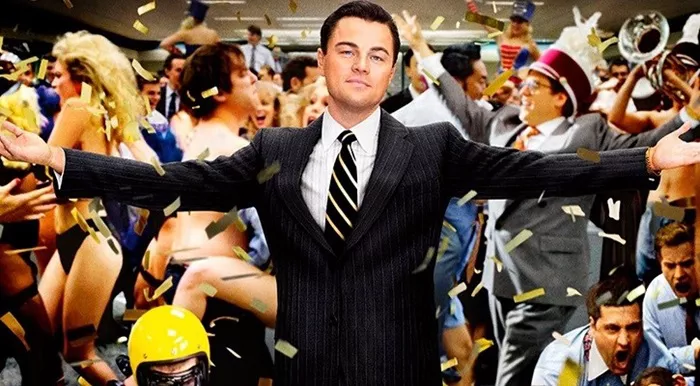Martin Scorsese’s “The Wolf of Wall Street” stands as a cinematic masterpiece, captivating audiences with its portrayal of the high-stakes world of finance and the excessive lifestyle of Jordan Belfort. However, despite its critical acclaim and commercial success, the film faced significant controversy and even outright bans in certain countries. In this article, we delve into the multifaceted reasons behind why was The Wolf of Wall Street banned, exploring its themes, content, and reception across different cultures and jurisdictions.
Depiction of Excessive Behavior and Moral Ambiguity
At the heart of the controversy surrounding “The Wolf of Wall Street” lies its unapologetic depiction of excessive behavior and moral ambiguity. The film chronicles the rise and fall of Jordan Belfort, a stockbroker who indulges in a hedonistic lifestyle fueled by greed, drugs, and unethical business practices. Belfort’s lavish parties, drug-fueled escapades, and disregard for the law paint a vivid picture of decadence and depravity, leading to concerns about the glorification of such behavior.
In countries where censorship laws are strict and moral standards are conservative, the portrayal of explicit content and morally questionable actions proved to be a major point of contention. Authorities in these regions argued that the film’s graphic depiction of sex, drug use, and financial fraud could potentially corrupt public morals and undermine social values, leading to its outright ban.
Impact on Viewer Sensibilities
Another factor contributing to the ban of “The Wolf of Wall Street” is its potential impact on viewer sensibilities. The film’s unflinching portrayal of excess and debauchery pushes the boundaries of conventional storytelling, presenting scenes of drug abuse, explicit language, and sexual content in a raw and unfiltered manner. While some audiences may appreciate the film’s realism and authenticity, others may find its content offensive or disturbing.
In jurisdictions where censorship is driven by concerns about protecting public decency and maintaining cultural norms, “The Wolf of Wall Street” faced resistance from regulatory bodies and moral watchdogs. The explicit nature of certain scenes, coupled with the film’s overall tone of amorality and indulgence, led to calls for its censorship or outright ban in order to shield audiences from potentially harmful content.
Perceived Glorification of Criminal Behavior
One of the most contentious aspects of “The Wolf of Wall Street” is its perceived glorification of criminal behavior. While the film portrays Jordan Belfort’s rise to power and wealth with unflinching realism, some critics argue that it fails to adequately condemn his unethical actions and their consequences. Instead, the film’s frenetic pace, witty dialogue, and charismatic performances by Leonardo DiCaprio and Jonah Hill may inadvertently glamorize Belfort’s criminal activities, blurring the line between right and wrong.
In societies where the rule of law is paramount and respect for authority is emphasized, the glorification of criminal behavior depicted in “The Wolf of Wall Street” was met with skepticism and disapproval. Concerns about the potential influence of such portrayals on impressionable audiences, particularly young people, prompted calls for censorship or restrictions on the film’s distribution in order to prevent the normalization of illegal and unethical conduct.
See Also: What message does the movie “The Pursuit of Happiness” want to convey?
Ethical Considerations and Industry Standards
The controversy surrounding “The Wolf of Wall Street” also sparked debates about ethical considerations and industry standards within the film industry. While filmmakers have long enjoyed creative freedom to explore controversial themes and push the boundaries of storytelling, they also bear a responsibility to consider the potential impact of their work on society at large. In the case of “The Wolf of Wall Street,” questions were raised about whether the film’s explicit content and morally ambiguous message crossed a line of acceptability.
Some critics argue that by glamorizing the excesses of Wall Street and downplaying the real-world consequences of financial fraud, “The Wolf of Wall Street” undermines efforts to promote transparency, accountability, and ethical conduct in the financial industry. In response to these concerns, regulatory bodies and industry organizations have called for greater oversight and scrutiny of films that depict criminal behavior or promote unethical values, leading to heightened scrutiny and potential censorship of controversial works.
Cultural Sensitivities and Political Context
The decision to ban “The Wolf of Wall Street” in certain countries also reflects broader cultural sensitivities and political considerations. In regions where censorship is used as a tool to maintain social order and preserve traditional values, films that challenge prevailing norms or criticize authority figures may face heightened scrutiny and resistance. In the case of “The Wolf of Wall Street,” its portrayal of greed, corruption, and excess struck a nerve in societies grappling with issues of inequality, corruption, and social injustice.
Furthermore, the political context in which a film is released can also influence its reception and treatment by censors. In countries where government control over the media is pervasive, films that are perceived as subversive or critical of the ruling regime may be subject to censorship or outright suppression. “The Wolf of Wall Street,” with its sharp critique of capitalism and the American Dream, was seen by some governments as a threat to their authority and legitimacy, leading to its prohibition or restriction.
Conclusion: A Complex Interplay of Factors
In conclusion, the ban of “The Wolf of Wall Street” in certain countries can be attributed to a complex interplay of factors, including its depiction of excessive behavior and moral ambiguity, impact on viewer sensibilities, perceived glorification of criminal behavior, ethical considerations and industry standards, cultural sensitivities, and political context. While the film continues to spark debates and controversies, its enduring legacy as a provocative and thought-provoking work of cinema remains undeniable. As audiences grapple with the ethical and moral dilemmas raised by the film, it serves as a reminder of the power of storytelling to provoke reflection, challenge assumptions, and confront uncomfortable truths about the human condition.
























